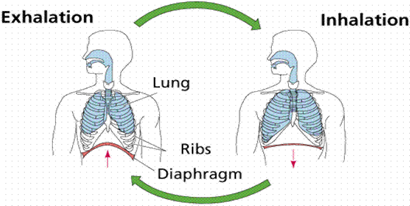HOMEOSTASIS
WHAT IS HOMEOSTASIS ? EXPLAIN WITH ITS EXAMPLES.
DEFINITION
The maintenance of the internal conditions of the human body at equilibrium , despite changes in the external environment is called homeostasis.
EXAMPLES
- BODY TEMPERATURE
The core temperature of human body remains at about 37℃ despite fluctuations in the surrounding air temperature.
- BLOOD GLUCOSE LEVEL
the blood glucose level remains about 1g per litre despite eating a meal rich in carbohydrates.
IMPORTANCE OF HOMEOSTASIS
Body cells need the internal enviroment in which conditions do not change much. Stable internal conditions are important for the efficient functioning of enzymes.
TYPES OF HOMEOSTASIS
There are three types of homeostasis:
- THERMOREGULATION
- OSMOREGULATION
- EXCRETION
✓ THERMOREGULATION
DEFINITION
The maintainance of internal temperature of internal temperature of body is called Thermoregulation .
EXAMPLE
The enzyme of body work best at particular temperatures .
Any change in body temperature may affect the functioning of enzymes.
OSMOREGULATION
DEFINITION
The maintenance of the amounts of water and salts in the body fluid is called osmoregulation
IMPORTANCE
The relative amounts of water and salts in body fluid and inside cells control the processess of diffusion and osmosis ,which are essential for the functioning of cells.
EXAMPLE
An example is freshwater fish. ... Some marine fish, like sharks, have adopted a different, efficient mechanism to conserve water, i.e., osmoregulation.
EXCRETION
The elimination of metabolic waste from body to maintain the internal conditions at equillibrium is called excretion.
EXAMPLE
Urine is an example of excretion.


![REMOVAL OF EXTRA WATER FROM PLANTS [ homeostasis class 10]](https://blogger.googleusercontent.com/img/b/R29vZ2xl/AVvXsEghltzJYj7Z5EtxLIcImoD26OcuuS6j7_7EVh9J6M25y4mOZ1IkkU4o_jnXfU8Z9bCfcZx7XO6RJmC04QyGL9_nmq-w3LqzYYLEa7ldXDLqALx7ZcH9t15pB1rM2VLwr15JJAmuhEtvDOo/w680/TURGID.png)



0 Comments